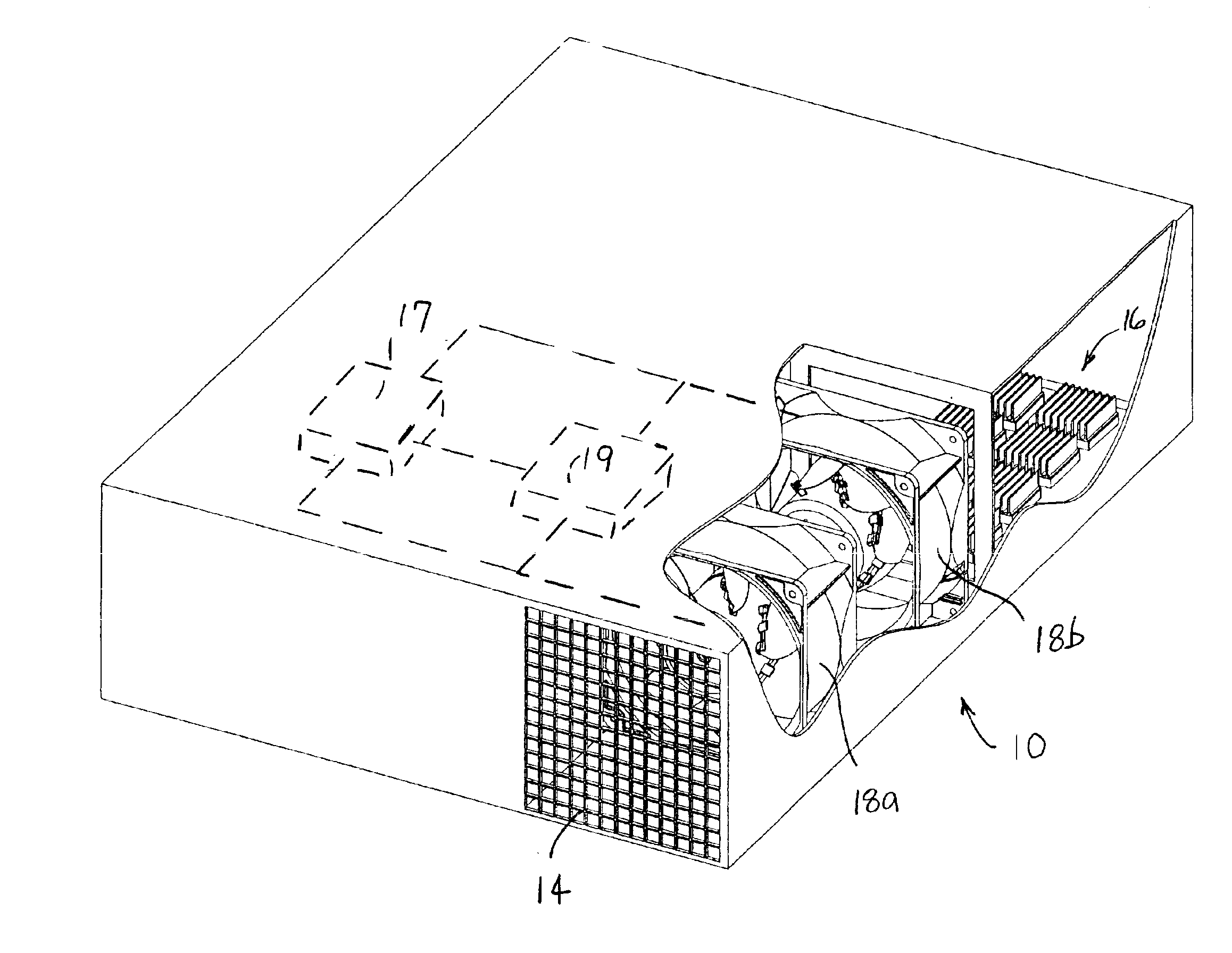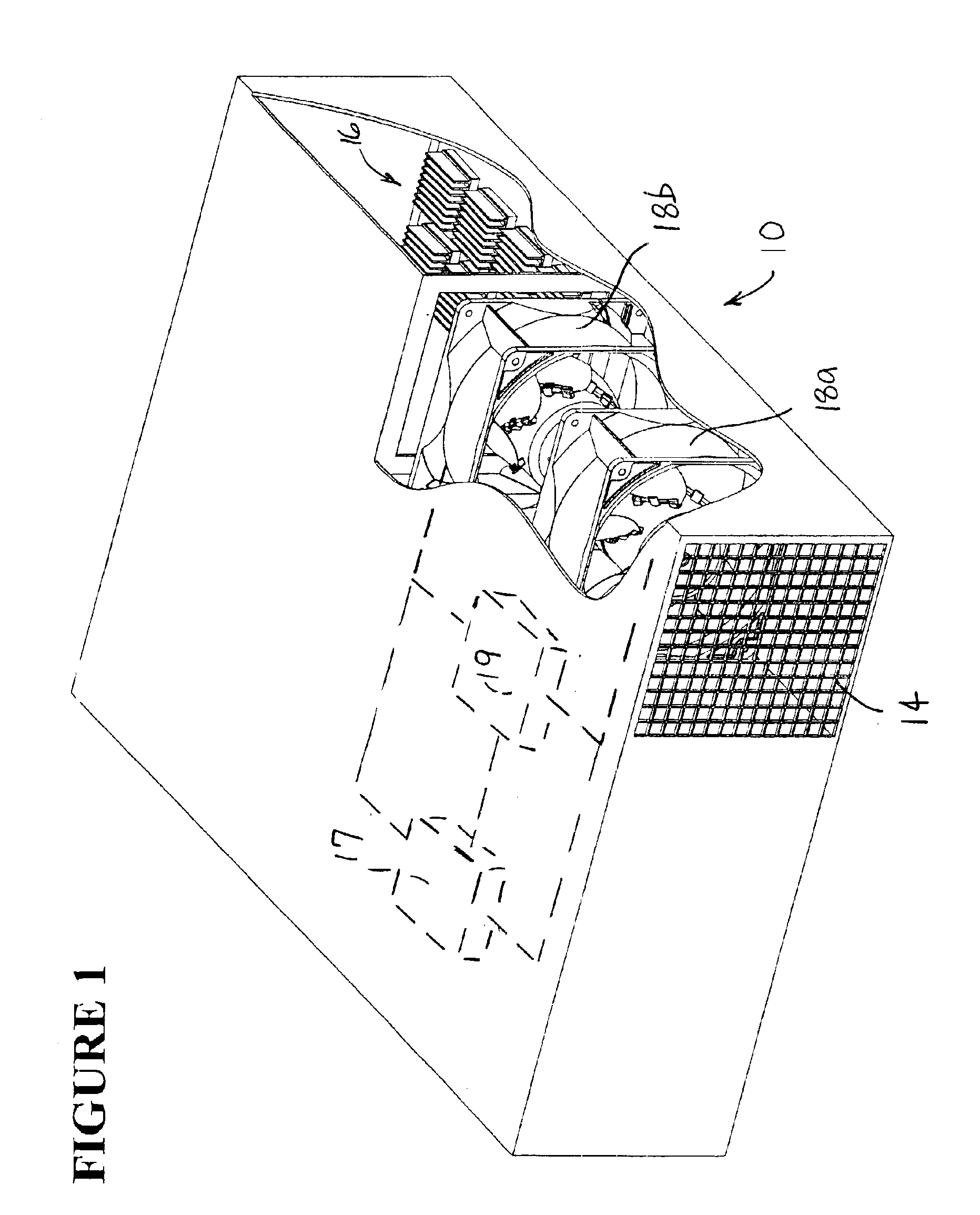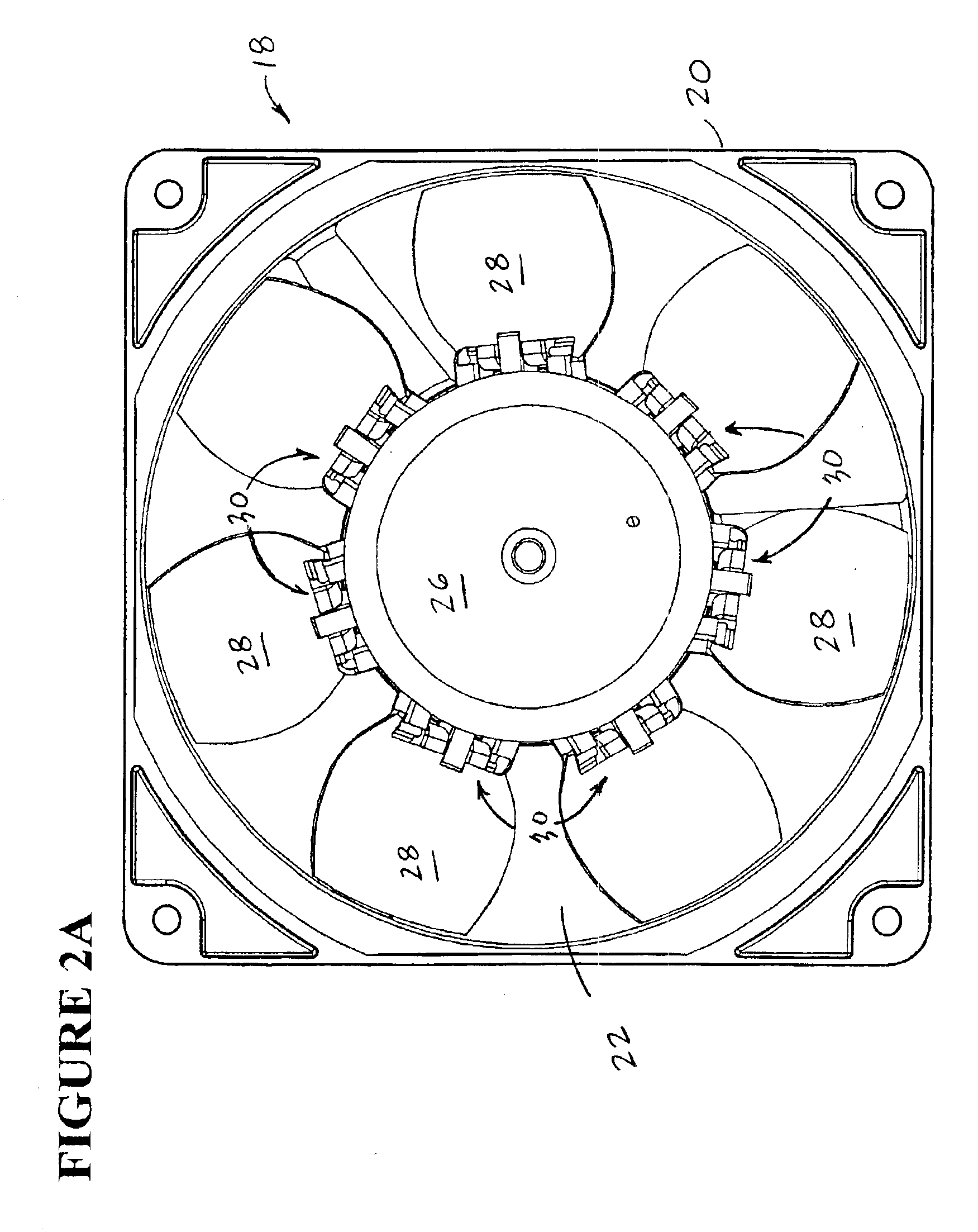Fan with collapsible blades, redundant fan system, and related method
a technology of collapsible blades and fan systems, applied in the direction of instruments, marine propulsion, vessel construction, etc., can solve the problems of inability to meet the needs of the user, improper performance or even permanent damage to the computer, and increase the cost of the user, so as to reduce the inefficiency of the fan and prevent undesirable blockage of the air stream
- Summary
- Abstract
- Description
- Claims
- Application Information
AI Technical Summary
Benefits of technology
Problems solved by technology
Method used
Image
Examples
Embodiment Construction
The currently preferred embodiments of the present invention overcome many of the problems that arise when fan systems that are used in computers and other electronic applications fail. The advantages, and other features of the disclosed fan, system and method, will become more readily apparent to those having ordinary skill in the pertinent art from the following detailed description of certain preferred embodiments taken in conjunction with the drawings which set forth representative embodiments of the present invention and wherein like reference numerals identify similar structural elements.
In FIG. 1, numeral 10 generally refers to a computer having a computer housing 12 served by a redundant fan system. The computer housing 12 defines at least one opening 14 and contains a number of computer components 16 (e.g., transformers, processors, circuitry, integrated circuits, power supplies, or like elements). A redundant fan system of the present invention includes a first fan 18a and...
PUM
 Login to View More
Login to View More Abstract
Description
Claims
Application Information
 Login to View More
Login to View More - R&D
- Intellectual Property
- Life Sciences
- Materials
- Tech Scout
- Unparalleled Data Quality
- Higher Quality Content
- 60% Fewer Hallucinations
Browse by: Latest US Patents, China's latest patents, Technical Efficacy Thesaurus, Application Domain, Technology Topic, Popular Technical Reports.
© 2025 PatSnap. All rights reserved.Legal|Privacy policy|Modern Slavery Act Transparency Statement|Sitemap|About US| Contact US: help@patsnap.com



